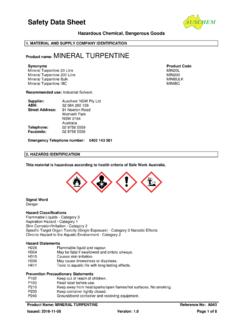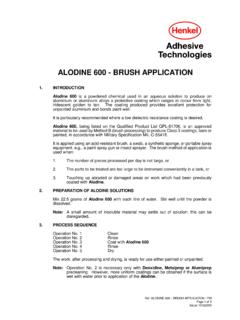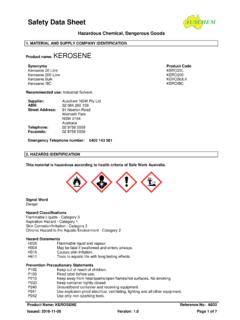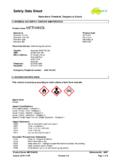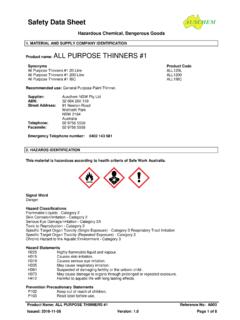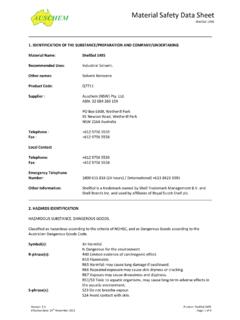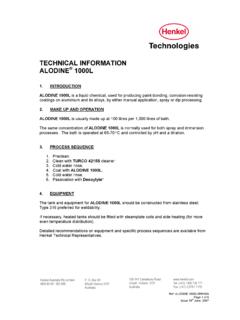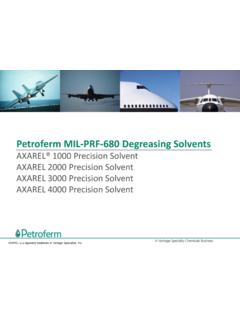Transcription of Methyl Ethyl Ketone - Solvents
1 Material Safety Data Sheet Methyl Ethyl Ketone Product: Methyl Ethyl Ketone Page: 1 of 9 Version: Effective Date: 10th July 2013 1. IDENTIFICATION OF THE SUBSTANCE/PREPARATION AND COMPANY/UNDERTAKING Material Name: Methyl Ethyl Ketone Other names: Ethyl Methyl Ketone Ethyl Methyl Ketone , MEK Product Code: S2113 Supplier : Auschem (NSW) Pty. Ltd. ABN: 32 084 260 159 PO Box 6309, Wetherill Park 91 Newton Road, Wetherill Park NSW 2164 Australia Telephone : +612 9756 5559 Fax : +612 9756 5558 Local Contact Telephone: +612 9756 5559 Fax: +612 9756 5558 Emergency Telephone Number: 1800 651 818 (24 hours) / (International) +613 8823 3095 2.
2 HAZARDS IDENTIFICATION HAZARDOUS SUBSTANCE. DANGEROUS GOODS. Classified as hazardous according to the criteria of NOHSC, and as Dangerous Goods according to the Australian Dangerous Goods Code. Symbol(s): F Highly flammable. Xi Irritant. R-phrase(s): R11 Highly flammable. R36 Irritating to eyes. R66 Repeated exposure may cause skin dryness or cracking. R67 Vapours may cause drowsiness and dizziness. S-phrase(s): S2 Keep out of the reach of children. S9 Keep container in a well-ventilated place. S16 Keep away from sources of ignition - No smoking. S 2 Keep out of the reach of children. Health Hazards: Vapours may cause drowsiness and dizziness. Repeated exposure may cause skin dryness or cracking. Irritating to eyes. Harmful: may cause lung damage if swallowed. Aggravated Medical Condition: Pre-existing medical conditions of the following organ(s) or organ system(s) may be aggravated by exposure to this material: Eyes.
3 Respiratory system. Material Safety Data Sheet Methyl Ethyl Ketone Product: Methyl Ethyl Ketone Page: 2 of 9 Version: Effective Date: 10th July 2013 Skin. Safety Hazards: Vapours are heavier than air. Vapours may travel across the ground and reach remote ignition sources causing a flashback fire danger. Exposure may enhance the toxicity of other materials. Highly flammable. SUSMP Schedule: 5 3. COMPOSITION/INFORMATION ON INGREDIENTS CAS No.: 78-93-3 INDEX No.: 606-002-00-3 EINECS No.: 201-159-0 Hazardous Components Chemical Name CAS EINECS Symbol(s) R-phrase(s) Conc. Methyl Ethyl Ketone 78-93-3 201-159-0 % Additional Information: Refer to chapter 16 for full text of EC R-phrases.
4 4. FIRST AID MEASURES Inhalation: Remove to fresh air. If rapid recovery does not occur, transport to nearest medical facility for additional treatment. Skin Contact: Remove contaminated clothing. Flush exposed area with water and follow by washing with soap if available. Eye Contact: Immediately flush eyes with large amounts of water for at least 15 minutes while holding eyelids open. Transport to the nearest medical facility for additional treatment. Ingestion: If swallowed, do not induce vomiting: transport to nearest medical facility for additional treatment. If vomiting occurs spontaneously, keep head below hips to prevent aspiration. If any of the following delayed signs and symptoms appear within the next 6 hours, transport to the nearest medical facility: fever greater than 101 F ( C), shortness of breath, chest congestion or continued coughing or wheezing.
5 If vomiting occurs spontaneously, keep head below hips to prevent aspiration. Give nothing by mouth. Do not induce vomiting. Advice to Physician: Potential for chemical pneumonitis. Consider: gastric lavage with protected airway, administration of activated charcoal. Call a doctor or poison control center for guidance. 5. FIRE FIGHTING MEASURES Clear fire area of all non-emergency personnel. Specific Hazards: Carbon monoxide may be evolved if incomplete combustion occurs. The vapour is heavier than air, spreads along the ground and distant ignition is possible. Material Safety Data Sheet Methyl Ethyl Ketone Product: Methyl Ethyl Ketone Page: 3 of 9 Version: Effective Date: 10th July 2013 Extinguishing Media: Alcohol-resistant foam, water spray or fog.
6 Dry chemical powder, carbon dioxide, sand or earth may be used for small fires only. Do not discharge extinguishing waters into the aquatic environment. Unsuitable Extinguishing Media: Do not use water in a jet. Protective Equipment for Firefighters: Wear full protective clothing and self-contained breathing apparatus. Additional Advice: Keep adjacent containers cool by spraying with water. Hazchem Code: 2YE - For fire fighting, use water fog, or in the absence of fog a fine mist may be used. Risk of explosion. Breathing apparatus, fire fighting gear and chemically impervious protective gloves should be worn. Prevent spillage from entering drains or watercourses. Evacuation of people from the neighbourhood of an incident should be considered. 6.
7 ACCIDENTAL RELEASE MEASURES Observe all relevant local and international regulations. Protective Measures: Avoid contact with spilled or released material. Immediately remove all contaminated clothing. For guidance on selection of personal protective equipment see Chapter 8 of this Material Safety Data Sheet. For guidance on disposal of spilled material see Chapter 13 of this Material Safety Data Sheet. Shut off leaks, if possible without personal risks. Remove all possible sources of ignition in the surrounding area. Use appropriate containment (of product and fire fighting water) to avoid environmental contamination. Prevent from spreading or entering drains, ditches or rivers by using sand, earth, or other appropriate barriers. Attempt to disperse the vapour or to direct its flow to a safe location for example by using fog sprays.
8 Take precautionary measures against static discharge. Ensure electrical continuity by bonding and grounding (earthing) all equipment. Monitor area with combustible gas indicator. Clean Up Methods: For large liquid spills (> 1 drum), transfer by mechanical means such as vacuum truck to a salvage tank for recovery or safe disposal. Do not flush away residues with water. Retain as contaminated waste. Allow residues to evaporate or soak up with an appropriate absorbent material and dispose of safely. Remove contaminated soil and dispose of safely. For small liquid spills (< 1 drum), transfer by mechanical means to a labelled, sealable container for product recovery or safe disposal. Allow residues to evaporate or soak up with an appropriate absorbent material and dispose of safely. Remove contaminated soil and dispose of safely.
9 Additional Advice: See Chapter 13 for information on disposal. Notify authorities if any exposure to the general public or the environment occurs or is likely to occur. Vapour may form an explosive mixture with air. 7. HANDLING AND STORAGE General Precautions: Avoid breathing vapours or contact with material. Only use in well ventilated areas. Wash thoroughly after handling. On guidance on selection of personal protective equipment see Chapter 8 of this Material Safety Data Sheet. Use Material Safety Data Sheet Methyl Ethyl Ketone Product: Methyl Ethyl Ketone Page: 4 of 9 Version: Effective Date: 10th July 2013 the information in this data sheet as input to a risk assessment of local circumstances to help determine appropriate controls for safe handling, storage and disposal of this material.
10 Handling: Avoid contact with the skin. Electrostatic discharge may cause fire. Ensure electrical continuity by bonding and grounding (earthing) all equipment to reduce the risk. The vapours in the head space of the storage vessel may lie in the flammable/explosive range and hence may be flammable. Extinguish any naked flames. Do not smoke. Remove ignition sources. Avoid sparks. Handling Temperature: Ambient. Storage: Keep away from aerosols, flammables, oxidizing agents, corrosives and from products harmful or toxic to man or to the environment. Must be stored in a well-ventilated area, away from sunlight, ignition sources and other sources of heat Storage Temperature: Ambient. Product Transfer: Keep containers closed when not in use. Do not use compressed air for filling, discharging or handling.

